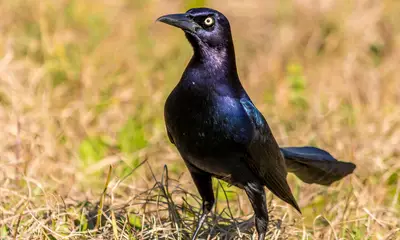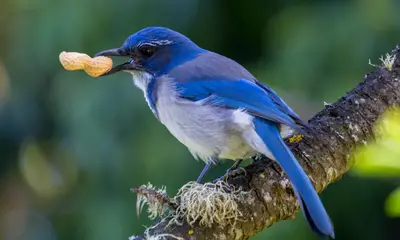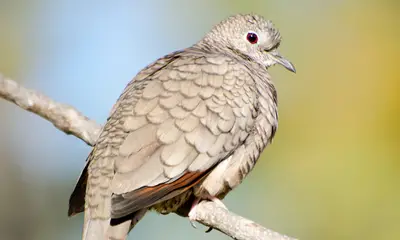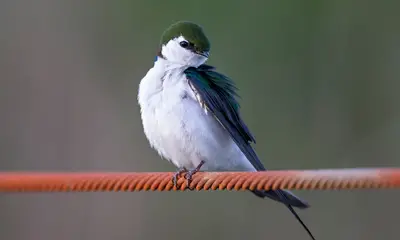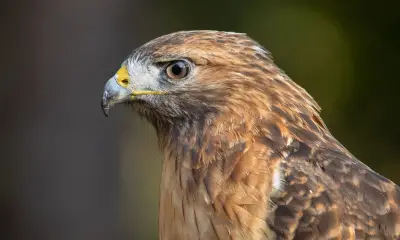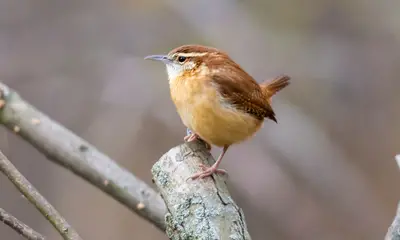9 Types Of WHITE BIRDS With LONG BEAKS (Guide With Photos)
Did you see a white bird with a long beak recently? In that case you’ll probably want to know what species you saw.
Identifying birds that are largely white and have a long beak is not as easy as it might seem, since there are several bird species in North America that fit this description.
To help you identify the bird you came across, we’ll cover all the white birds with long beaks that can be seen in North America.
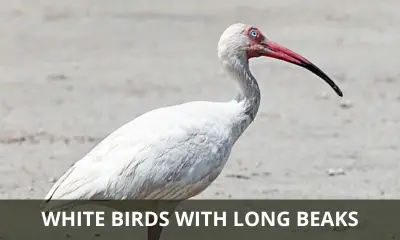
What are the different types of white birds with long beaks in North America?
There are 9 different types of white birds that have long beaks in North America, which are covered in full detail below.
White Ibis
Scientific name: Eudocimus albus
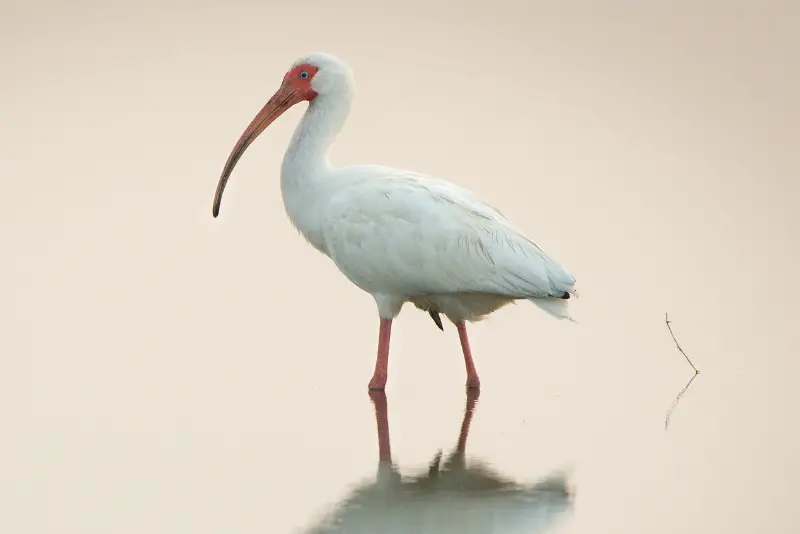
This white waterbird with long orange beak is easy to recognize due to its vividly orange-colored beak that is curved downwards.
The black wing tips are not really apparent until it takes to the wing.
During the first two years of their lives, immature White Ibises have a chocolate brown body with light streaks and a pale orange beak.
This white bird has the longest beak relative to its body size
It is most common in coastal wetlands along the Florida Gulf Coast. And while it is most commonly found in coastal areas, the American White Ibis prefers to forage in freshwater habitats.
This bird likes to catch fish, insects, crayfish, and other crustaceans. Crayfish form a large part of its diet in areas where they are common.
The White Ibis nests in large colonies in forests that are close to wetlands. It is extremely social birds, and likes to forage in groups of 20 birds or more. In fact, it’s rare to see a solitary White Ibis.
American White Pelican
Scientific name: Pelecanus erythrorhynchos

The American White Pelican is one of the largest aquatic birds in North America, and is almost entirely white, except for black primary and secondary feathers on its wings.
Its huge beak is bright orange, and has a flat plate protruding from the upper part of the beak during the summer breeding season.
Outside of the breeding season, the long bill changes its color from orange to pale yellowish.
These white water birds with long beaks breed in the northern US, and spend the winter along the Gulf Coast, as well as in Florida and California.
With a wingspan of up to 10 feet, and a body weight of up to 30 pounds in males, the American White Pelican is the biggest white bird in North America.
This bird feeds almost exclusively on fish, but unlike other pelican species it doesn’t dive in order to catch them. Instead it submerges its head down into the water, and grabs fish with its large beak.
Its preferred habitat are estuaries, shallow bays, and coastal inlets, as well as freshwater lakes further inland.
American White Pelicans are most often seen in groups that like to cooperate with each other when foraging for fish.
Great Egret
Scientific name: Ardea alba
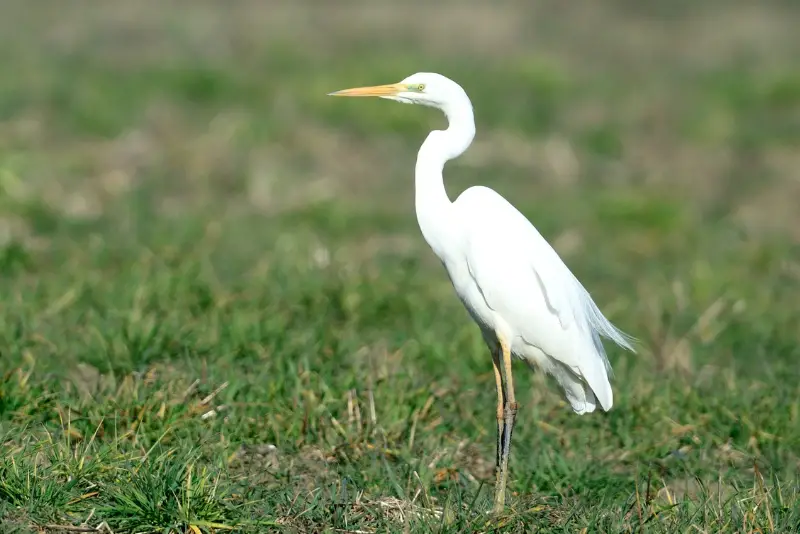
The Great Egret has a range that spans nearly the whole planet, and these birds are found on almost all continents.
This egret is a big, entirely white bird, except for its long yellow beak and black legs and feet.
During the spring and summer breeding seasons, the Great Egret grows a plume on its back that extends all the way to the tip of its tail.
It lives in both saltwater and freshwater habitats, and often nests in large colonies on the shores of swamps, lakes, and rivers.
These tall white birds use their long necks and beaks to catch prey in any type of shallow water, including ponds, lakes, rivers, estuaries, as well as rice fields and other flooded areas.
Great Blue Heron (White Subspecies)
Scientific name: Ardea herodias occidentalis

Originally considered a separate species from the Great Blue Heron (Ardea herodias) and called the Great White Heron, this enormous white bird is now classified as a subspecies (Ardea herodias occidentalis), since it regularly interbreeds with the Great Blue Heron.
This large bird has a wingspan of up to 6 feet, and likes to hunt for small fish, reptiles and other aquatic animals by wading in the shallows of lakes, marshes and ponds.
It is found in sparse numbers in southeastern states of the USA, and forages on meadows, golf courses and grassy areas, where it stalks small mammals.
It is a non-migratory bird, and can be seen in its range all year round.
Snowy Egret
Scientific name: Egretta thula
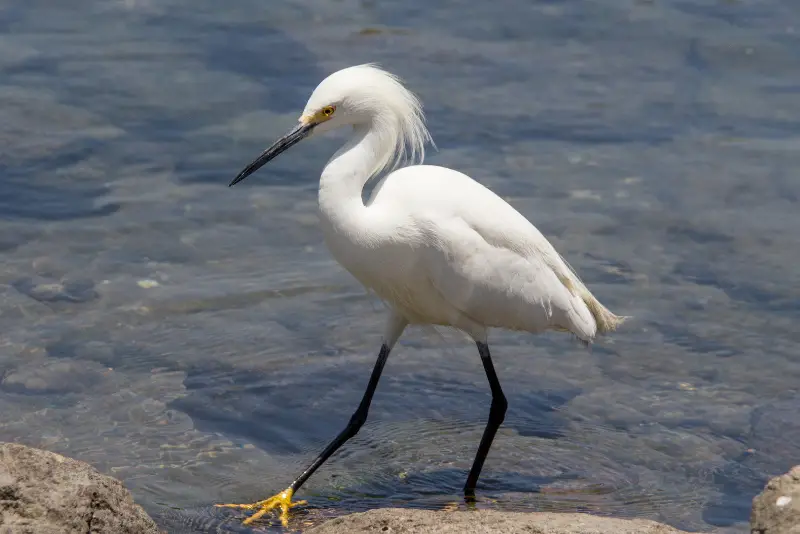
The Snowy Egret has become an increasingly common breeding bird all over the southern United States.
This is due to aggressive conservation efforts that were necessary because this Egret species was systematically hunted in previous centuries.
This little white egret stands out due to its slim black bill and bright area between the eyes and nostrils.
In adult birds, the feet are a brilliant golden yellow, while their long legs are totally black. It is thought that the brightly colored feet help to attract small fish and other prey.
The legs of juvenile birds have a predominant greenish yellow color, with some black areas on the front of the leg.
It is found in practically all types of wetland environments, from small ponds to saltwater and everything in between.
Cattle Egret
Scientific name: Bubulcus ibis
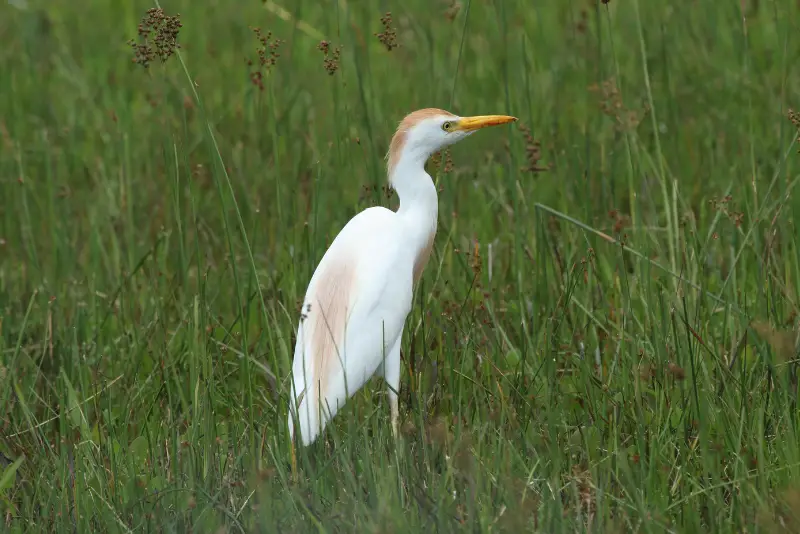
The Cattle Egret is a relatively new species in the New World that originated in Europe and Africa.
Nobody knows how these birds crossed the Atlantic, but they were first discovered breeding in Brazil, and later in Florida, where these birds first appeared in late 1955.
Cattle Egrets have been very successful at colonizing the Americas, and are common breeding birds all over the southern United States.
In contrast to other egrets and herons, Cattle Egrets regularly forage in dry habitats, including high altitude areas.
This is a small egret that is all-white, except for the breeding season, when adults develop orange plumage on the back of their head, back, and chest.
The legs and the long beak are yellow, but at the peak of the breeding season, these birds take on a ruddy hue.
Wood Stork
Scientific name: Mycteria americana
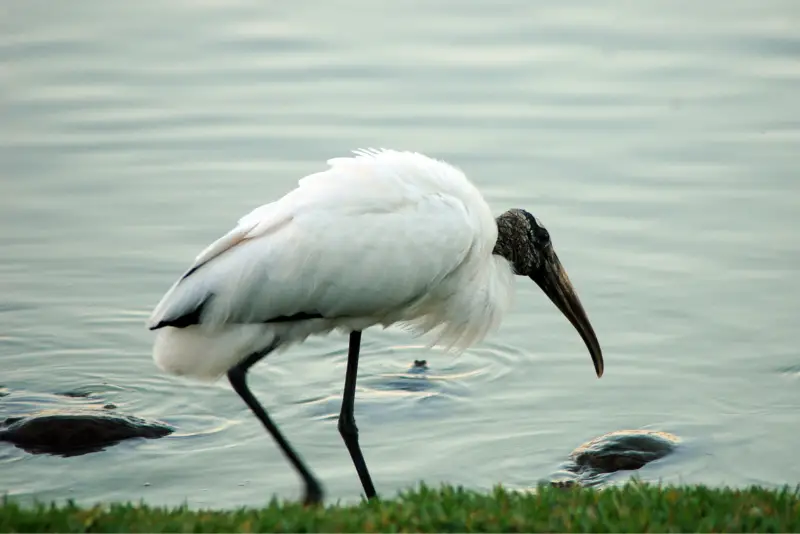
It’s easy to identify a Wood Stork if you can see it up close, due to its entirely white plumage combined with a long beak, as well as a bald, black head.
Similar to the White Ibis, the Wood Stork has a bill that curves slightly downwards. However, in contrast to the White Ibis, the Wood Stork has a black bill.
While the tail and wing tips are black, this is usually only apparent when you see a Wood Stork in flight.
The Wood Stork is a large bird, similar in size to a Great Egret, but is easily distinguishable from that species by its curved beak.
Unfortunately, Wood Stork populations have been in decline over the past decades, which is a trend that it shares with many other large wading birds.
It feeds on frogs and other amphibians, fish, and aquatic invertebrates. It likes to nest in large colonies in old trees close to foraging areas.
Whooping Crane
Scientific name: Grus americana
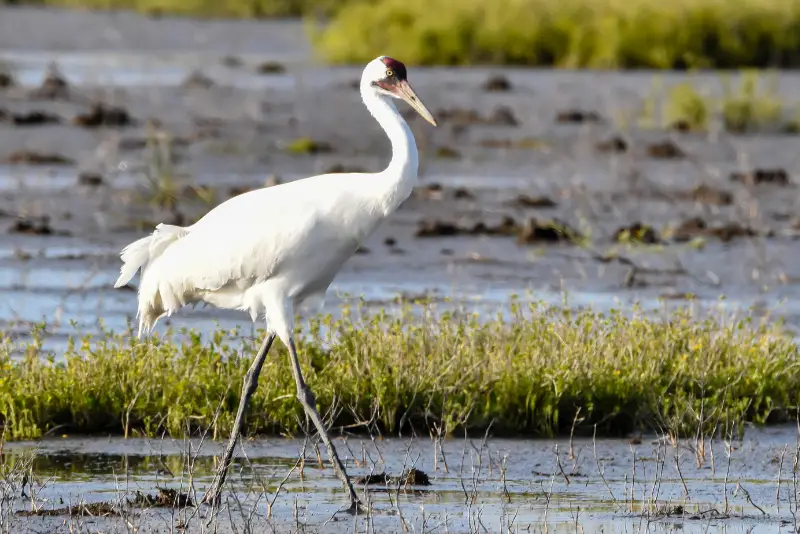
The Whooping Crane was almost at the edge of extinction in the 1930s, with less than 20 birds remaining.
However, sustained conservation efforts have brought it back to a current population that numbers 600 birds.
Adult Whooping Cranes have a completely white body, with a red cap that consists of bare skin. In contrast to adults, juvenile birds have a reddish brown color.
Whooping Cranes are found in Florida and Texas during the cold season, wintering in Aransas National Wildlife Refuge. These birds breed in Alberta, Canada, and migrate south to spend the winter.
During the non-breeding season, the preferred habitat of Whooping Cranes are marshes, estuaries, and salt flats.
These birds feed mainly on crustaceans and mollusks, with blue crabs making up the largest part of their diet.
While the population of Whooping Cranes has made an amazing comeback from the edge of extinction, it is still a critically endangered species, and in need of continued conservation efforts.
Masked Booby
Scientific name: Sula dactylatra
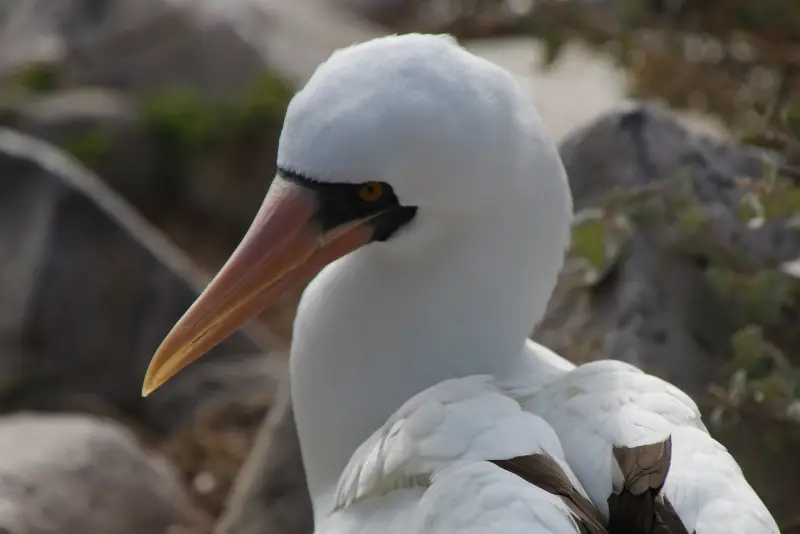
The Masked Booby is a large white seabird with a wingspan of up to 6 feet. It is mostly white, except for black flight feathers and a black mask, and has a long yellow bill.
They are found in tropical zones of both the Pacific and Atlantic, and are most often observed foraging far out at sea, where they catch squid and fish by diving into the water.
In North America, the best are to observe these birds is around the islands to the south of Florida.
Final remarks
In summary, here are the 9 types of white-colored birds with long beaks covered in this article:
- White Ibis
- American White Pelican
- Great Egret
- Great Blue Heron (White Subspecies)
- Snowy Egret
- Cattle Egret
- Wood Stork
- Whooping Crane
- Masked Booby
If you’ve spotted one of these birds, but aren’t sure which species it was, check our detailed ID guide with photos above.
If you enjoyed this article, check out our guide to the types of white birds found in Florida.

